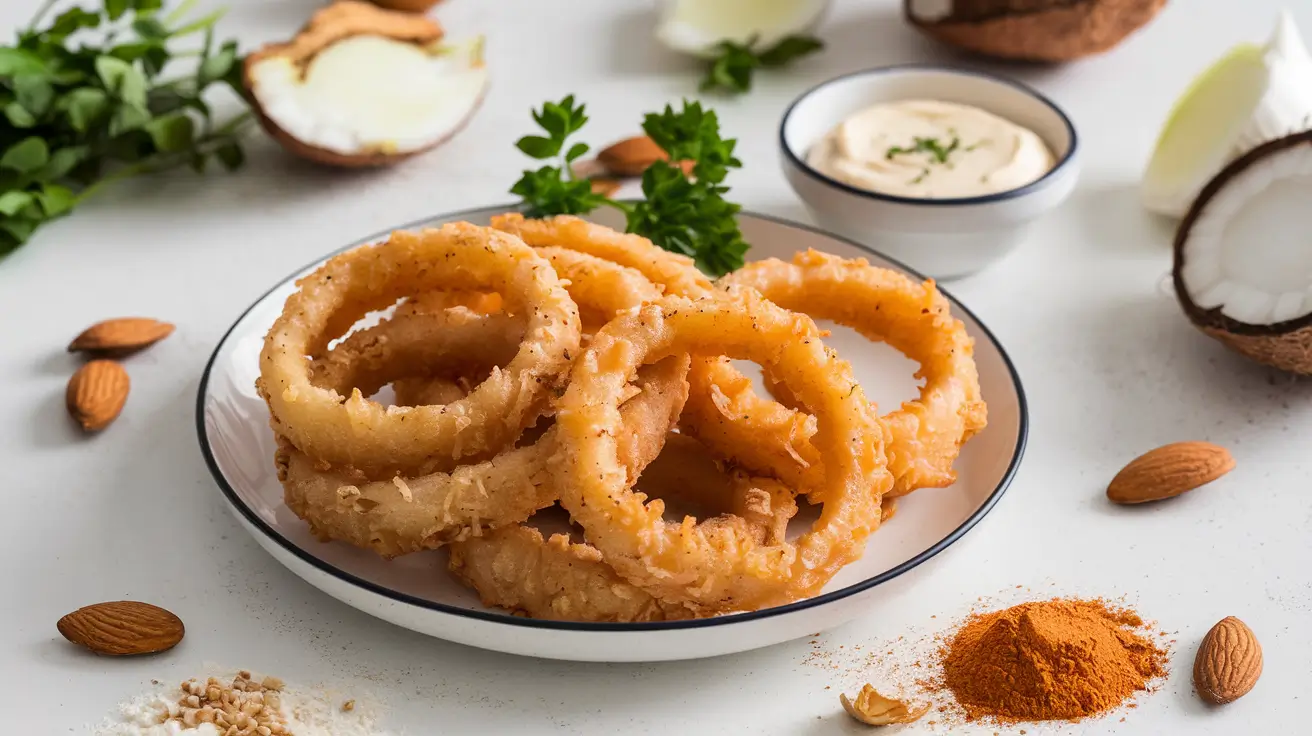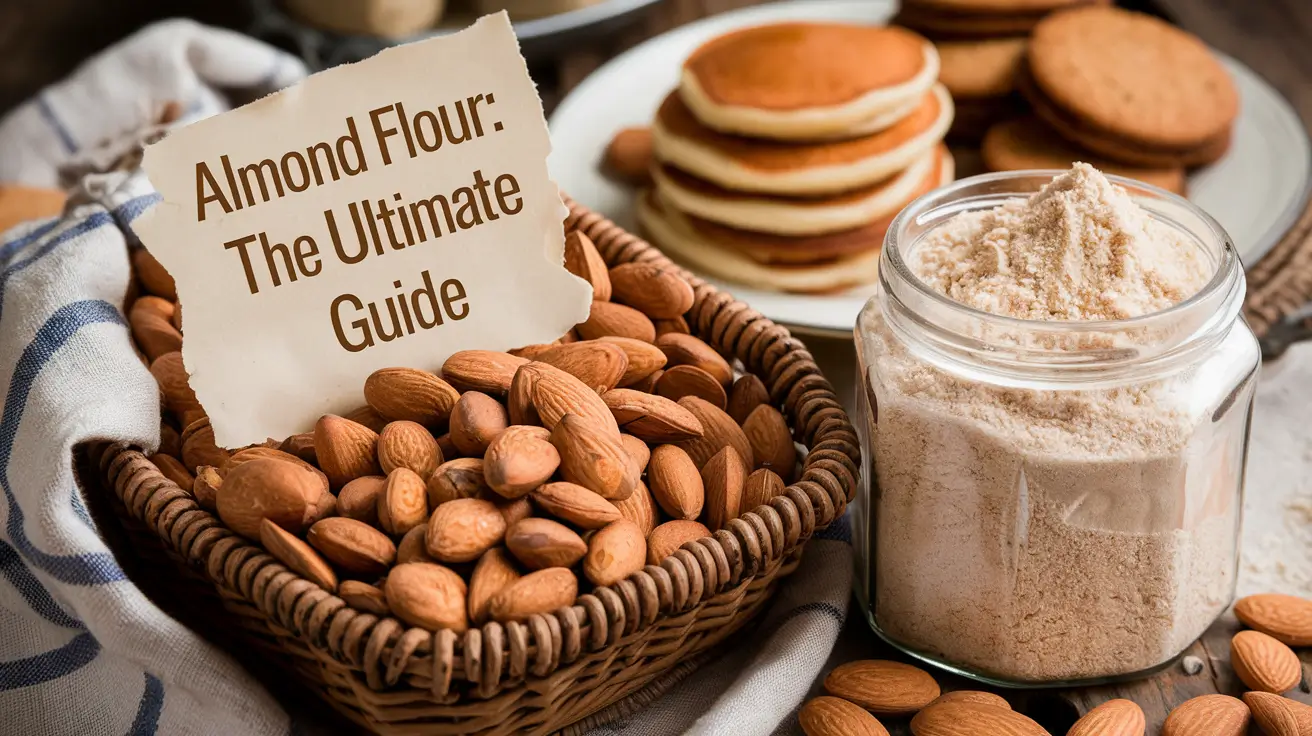Keto Onion Rings: A Low-Carb Twist on a Classic Favorite

Are you following a ketogenic diet but craving the crispy, savory goodness of onion rings? Look no further! In this comprehensive guide, we’ll explore the world of keto onion rings, a delicious low-carb alternative to the traditional deep-fried favorite. Discover how you can satisfy your cravings without compromising your diet goals. From the basics of the keto diet to step-by-step recipes and expert tips, we’ve got you covered. Let’s dive in and learn how to make these guilt-free, crispy delights!
Table of Contents
- Introduction to Keto Onion Rings
- Understanding the Keto Diet
- Benefits of Keto Onion Rings
- Ingredients for Keto Onion Rings
- Step-by-Step Recipe
- Cooking Methods
- Nutritional Information
- Variations and Flavor Enhancements
- Serving Suggestions and Pairings
- Troubleshooting Common Issues
- Storing and Reheating
- Frequently Asked Questions
- Expert Tips for Perfect Keto Onion Rings
- Conclusion
Introduction to Keto Onion Rings
Onion rings have been a beloved side dish and snack for decades. Their crispy exterior and sweet, tender interior make them irresistible to many. However, traditional onion rings are typically high in carbohydrates due to their flour-based batter and breadcrumb coating, making them off-limits for those following a ketogenic diet.
Enter keto onion rings – a clever reimagining of this classic dish that maintains the satisfying crunch and flavor while keeping carb counts low. By substituting high-carb ingredients with keto-friendly alternatives, you can enjoy this treat without derailing your low-carb lifestyle.
In this post, we’ll explore everything you need to know about keto onion rings, from their nutritional benefits to step-by-step recipes and expert tips for achieving the perfect crispy texture. Whether you’re a seasoned keto dieter or just looking for healthier alternatives to your favorite foods, this guide will help you master the art of keto onion rings.
Understanding the Keto Diet
Before we dive into the specifics of keto onion rings, it’s essential to understand the basics of the ketogenic diet. The keto diet is a high-fat, moderate-protein, and very low-carbohydrate eating plan designed to shift your body’s primary fuel source from glucose to ketones, a state known as ketosis.
Key aspects of the keto diet include:
- Macronutrient Ratios: Typically, the keto diet consists of about 70-75% fat, 20-25% protein, and only 5-10% carbohydrates.
- Carb Restriction: Most keto dieters aim to consume fewer than 50 grams of net carbs per day, with some stricter plans limiting intake to 20-30 grams.
- Food Choices: Keto-friendly foods include meats, fish, eggs, dairy, nuts, seeds, low-carb vegetables, and healthy fats like avocados and olive oil.
- Benefits: Potential benefits of the keto diet include weight loss, improved blood sugar control, increased energy, and enhanced mental clarity.
- Challenges: The diet can be challenging to follow and may lead to the “keto flu” during the initial adaptation period.
Understanding these principles is crucial when developing keto-friendly recipes like onion rings, as it informs ingredient choices and portion sizes to maintain ketosis while enjoying delicious foods.
Benefits of Keto Onion Rings
Keto onion rings offer several advantages over their traditional counterparts:
- Low Carb Content: By using alternative flours and coatings, keto onion rings significantly reduce carbohydrate intake, helping you stay within your daily carb limit.
- High in Healthy Fats: The use of ingredients like almond flour and coconut oil increases the healthy fat content, aligning with keto diet principles.
- Nutrient-Dense: Onions themselves are low in calories but rich in vitamins, minerals, and antioxidants, providing nutritional benefits beyond just taste.
- Blood Sugar Control: The low-carb nature of keto onion rings helps prevent blood sugar spikes, making them a better option for those monitoring their glucose levels.
- Satiety: The combination of fiber from the onions and fats from the coating can help you feel fuller for longer, potentially aiding in weight management.
- Versatility: Keto onion rings can be customized with various seasonings and served in multiple ways, adding variety to your low-carb meal plan.
- Gut Health: Onions contain prebiotic fibers that can support a healthy gut microbiome.
- Reduced Guilt: Enjoying a keto-friendly version of a typically “off-limits” food can help with diet adherence and satisfaction.
By choosing keto onion rings, you can indulge in a crispy, flavorful treat while supporting your health and dietary goals.
Ingredients for Keto Onion Rings
Creating delicious keto onion rings requires careful selection of low-carb ingredients that can mimic the texture and flavor of traditional recipes. Here’s a comprehensive look at the key components:
- Onions:
- Choose medium to large onions, preferably sweet varieties like Vidalia or Walla Walla for a milder flavor.
- White or yellow onions work well too, offering a stronger taste.
- Low-Carb Flours:
- Almond flour: Rich in healthy fats and provides a nutty flavor.
- Coconut flour: Highly absorbent and adds a slight sweetness.
- Ground pork rinds: Offers a crispy texture and savory taste.
- Binding Agents:
- Eggs: Help the coating adhere to the onions and add protein.
- Heavy cream: Provides richness and helps create a thicker batter.
- Seasonings:
- Salt and pepper: Essential for enhancing flavor.
- Paprika: Adds a subtle smoky taste and appealing color.
- Garlic powder: Complements the onion flavor.
- Optional: cayenne pepper, Italian herbs, or onion powder for variety.
- Leavening Agents:
- Baking powder: Helps achieve a lighter, crispier texture.
- Cooking Oils:
- Avocado oil: High smoke point, ideal for frying.
- Coconut oil: Adds a subtle sweetness and is rich in MCTs.
- Cheese (optional):
- Grated Parmesan: Adds flavor and helps with browning.
- Nutritional yeast: Provides a cheesy flavor for dairy-free options.
- Alternative Coatings:
- Crushed pork rinds: Offers a super crispy texture.
- Unsweetened shredded coconut: Adds a unique flavor and texture.
- Xanthan Gum (optional):
- Helps thicken the batter and improve texture.
When selecting these ingredients, always check the labels to ensure they are truly low in carbs and don’t contain hidden sugars or starches. Quality matters, so opt for fresh, organic ingredients when possible to maximize both flavor and nutritional benefits.
Step-by-Step Recipe
Now that we’ve covered the ingredients, let’s dive into a detailed, step-by-step recipe for making perfect keto onion rings:
Ingredients:
- 2 large onions
- 1 cup almond flour
- 1/4 cup coconut flour
- 2 large eggs
- 1/4 cup heavy cream
- 1 tsp baking powder
- 1 tsp salt
- 1/2 tsp black pepper
- 1 tsp paprika
- 1/2 tsp garlic powder
- Avocado oil for frying
Instructions:
- Prepare the Onions:
- Peel the onions and slice them into 1/4-inch thick rings.
- Separate the rings and set aside the largest ones for coating. (Save smaller rings for other recipes.)
- Create the Dry Mixture:
- In a shallow bowl, combine almond flour, coconut flour, salt, pepper, paprika, garlic powder, and baking powder.
- Mix well to ensure even distribution of spices.
- Prepare the Wet Mixture:
- In another bowl, whisk together eggs and heavy cream until well combined.
- Set Up Your Coating Station:
- Arrange your bowls in this order: onion rings, wet mixture, dry mixture, and a clean plate for coated rings.
- Coat the Onion Rings:
- Dip an onion ring into the wet mixture, ensuring it’s fully coated.
- Allow excess to drip off, then place it in the dry mixture.
- Cover completely with the dry mixture, gently pressing to adhere.
- Shake off excess and place on the clean plate.
- Repeat with all onion rings.
- Prepare for Frying:
- In a large, deep skillet or Dutch oven, heat about 1 inch of avocado oil to 350°F (175°C).
- Use a thermometer to monitor oil temperature for best results.
- Fry the Onion Rings:
- Carefully place coated rings into the hot oil, working in batches to avoid overcrowding.
- Fry for 2-3 minutes per side, or until golden brown and crispy.
- Remove with a slotted spoon and place on a paper towel-lined plate to drain excess oil.
- Season and Serve:
- While still hot, sprinkle with a little extra salt if desired.
- Serve immediately with your favorite keto-friendly dipping sauce.
Tips for Success:
- Let the coated onion rings sit for a few minutes before frying to help the coating adhere better.
- Maintain oil temperature between batches for consistent results.
- For extra crispiness, you can double-coat the onion rings by repeating steps 5 and 6.
This recipe yields approximately 4 servings of delicious, crispy keto onion rings. Remember, cooking times may vary slightly depending on the thickness of your onion slices and the exact temperature of your oil.
Cooking Methods
While deep-frying is the traditional method for cooking onion rings, there are several alternative cooking methods that can yield delicious results while potentially reducing the overall fat content. Here’s a look at different ways to prepare your keto onion rings:
- Deep Frying:
- Pros: Achieves the most authentic texture and flavor.
- Cons: Requires more oil and can be messy.
- Tips: Use a deep fryer or heavy-bottomed pot with a thermometer to maintain consistent oil temperature.
- Air Frying:
- Pros: Uses minimal oil, resulting in fewer calories.
- Cons: May not achieve the same level of crispiness as deep-frying.
- Method: Preheat air fryer to 370°F (188°C). Spray coated onion rings with oil spray. Cook for 8-10 minutes, flipping halfway through.
- Baking:
- Pros: Healthiest option, requires no additional oil.
- Cons: Texture may be less crispy than fried versions.
- Method: Preheat oven to 425°F (218°C). Place onion rings on a parchment-lined baking sheet. Bake for 12-15 minutes, flipping halfway through.
- Pan Frying:
- Pros: Uses less oil than deep frying, good for smaller batches.
- Cons: Requires careful monitoring to prevent burning.
- Method: Heat 1/4 inch of oil in a skillet over medium heat. Fry onion rings for 2-3 minutes per side until golden brown.
- Combination Method (Bake then Broil):
- Pros: Achieves a crispy exterior without excessive oil.
- Cons: Requires more time and attention.
- Method: Bake as described above, then broil for 1-2 minutes per side for extra crispiness.
Each method has its own advantages and may require slight adjustments to the recipe or cooking times. Experiment with different techniques to find the one that best suits your preferences and dietary needs.
Nutritional Information
Understanding the nutritional profile of keto onion rings is crucial for those tracking their macronutrients or calories. While exact values may vary depending on specific ingredients and cooking methods, here’s a general breakdown for a serving of keto onion rings (approximately 4-5 rings):
- Calories: 180-220
- Total Fat: 15-18g
- Saturated Fat: 3-5g
- Trans Fat: 0g
- Cholesterol: 40-50mg
- Sodium: 300-400mg
- Total Carbohydrates: 6-8g
- Dietary Fiber: 3-4g
- Net Carbs: 3-4g
- Sugars: 1-2g
- Protein: 7-9g
Key Nutritional Highlights:
- Low Net Carbs: With only 3-4g of net carbs per serving, keto onion rings fit well within most ketogenic diet plans.
- High in Healthy Fats: The almond flour and cooking oils provide heart-healthy monounsaturated and polyunsaturated fats.
- Moderate Protein: The eggs and almond flour contribute to a decent protein content, supporting muscle maintenance.
- Fiber-Rich: The combination of onions and almond flour provides a good amount of dietary fiber, promoting digestive health.
- Vitamins and Minerals: Onions are a good source of vitamin C, B vitamins, and potassium. Almond flour adds vitamin E and magnesium.
- Antioxidants: Onions contain various antioxidants, including quercetin, which may have anti-inflammatory properties.
Comparison to Traditional Onion Rings:
Compared to traditional onion rings, the keto version typically has:
- 60-70% fewer total carbohydrates
- 80-90% fewer net carbs
- 20-30% more protein
- Similar or slightly higher fat content, but with a better profile of healthy fats
It’s important to note that while keto onion rings are a healthier alternative, they should still be enjoyed in moderation as part of a balanced diet. The calorie content can add up quickly, so be mindful of portion sizes, especially if you’re watching your calorie intake for weight management.
Variations and Flavor Enhancements
One of the joys of making keto onion rings is the ability to customize and experiment with different flavors and textures. Here are some exciting variations and flavor enhancements to try:
- Spicy Keto Onion Rings:
- Add 1/2 tsp cayenne pepper and 1/4 tsp chili powder to the dry mixture.
- Serve with a keto-friendly spicy mayo dip.
- Italian Herb Onion Rings:
- Mix 1 tsp each of dried basil, oregano, and rosemary into the dry coating.
- Add 2 tbsp of grated Parmesan cheese for extra flavor.
- BBQ-Style Onion Rings:
- Incorporate 1 tsp smoked paprika, 1/2 tsp onion powder, and a pinch of sweetener into the coating.
- Serve with a keto-friendly BBQ sauce.
- Coconut Curry Onion Rings:
- Replace half the almond flour with unsweetened shredded coconut.
- Add 1 tsp curry powder and 1/4 tsp turmeric to the dry mix.
- Loaded Onion Rings:
- After frying, top with crumbled bacon, shredded cheddar, and chopped green onions.
- Serve with a side of sour cream.
- Zesty Lemon Pepper Rings:
- Add 1 tbsp lemon zest and 1 tsp freshly ground black pepper to the coating.
- Garlic Parmesan Onion Rings:
- Increase garlic powder to 1 tsp and add 1/4 cup grated Parmesan to the dry mix.
- Sprinkle with extra Parmesan immediately after frying.
- Buffalo Blue Cheese Onion Rings:
- Add 1 tsp of buffalo seasoning to the dry mix.
- Serve with a blue cheese dipping sauce.
- Asian-Inspired Onion Rings:
- Mix in 1 tsp of Chinese five-spice powder to the coating.
- Serve with a keto-friendly sweet and sour sauce.
- Everything Bagel Onion Rings:
- Add 2 tbsp of everything bagel seasoning to the dry coating mix.
Remember to adjust the nutritional information accordingly when adding extra ingredients. These variations can help keep your keto onion ring experience exciting and diverse, preventing diet fatigue and satisfying different cravings.
Serving Suggestions and Pairings
Keto onion rings are versatile and can be enjoyed in various ways. Here are some serving suggestions and pairing ideas to enhance your low-carb dining experience:
- As a Side Dish:
- Serve alongside a juicy keto burger or grilled chicken for a complete meal.
- Pair with a bunless hot dog for a classic fast-food inspired combo.
- Appetizer Platter:
- Create a keto-friendly appetizer spread with onion rings, buffalo wings, and cheese sticks.
- Salad Topper:
- Crumble cooled onion rings over a fresh green salad for added crunch and flavor.
- With Dipping Sauces:
- Serve with a variety of keto-friendly dips such as:
- Garlic aioli
- Ranch dressing
- Spicy mayo
- Avocado dip
- Sugar-free ketchup
- Keto “Blooming Onion”:
- Arrange the onion rings in a circular pattern to mimic the popular restaurant appetizer.
- Topping for Keto Casseroles:
- Use crushed onion rings as a crispy topping for low-carb casseroles.
- With Grilled or Roasted Meats:
- Serve alongside steak, pork chops, or roasted chicken for a steakhouse-inspired meal.
- Keto Fish and Chips:
- Pair with baked or air-fried keto-breaded fish for a low-carb take on the classic dish.
- Game Day Snack:
- Offer as part of a keto-friendly snack spread during sporting events.
- Brunch Addition:
- Serve with eggs and bacon for a satisfying keto breakfast or brunch.
Remember to consider the additional carbs and calories from any sauces or pairings to ensure they fit within your daily macronutrient goals.
Troubleshooting Common Issues
Even with a great recipe, you might encounter some challenges when making keto onion rings. Here are solutions to common problems:
- Coating Falls Off:
- Ensure onions are dry before coating.
- Let coated rings sit for a few minutes before frying to help coating adhere.
- Make sure oil is hot enough before adding rings.
- Rings Are Greasy:
- Oil temperature is too low. Maintain 350-375°F (175-190°C).
- Drain on paper towels immediately after frying.
- Uneven Browning:
- Flip rings halfway through cooking.
- Ensure oil depth is consistent.
- Burnt Exterior, Raw Interior:
- Oil is too hot. Lower temperature slightly.
- Cut onions into thinner slices.
- Soggy Rings:
- Don’t overcrowd the pan, which lowers oil temperature.
- Serve immediately after cooking.
- Batter Too Thick:
- Add a little more liquid (egg or heavy cream) to thin the batter.
- Batter Too Thin:
- Add more almond flour or coconut flour to thicken.
- Strong Egg Taste:
- Use only egg whites or replace some egg with heavy cream.
- Not Crispy Enough:
- Try double coating the rings.
- For baked versions, finish under the broiler for extra crispiness.
- Onions Too Strong:
- Soak sliced onions in cold water for 10-15 minutes before coating.
By addressing these common issues, you can perfect your keto onion ring technique and consistently achieve delicious results.
Storing and Reheating
While keto onion rings are best enjoyed fresh, you may sometimes have leftovers or want to prepare them in advance. Here’s how to store and reheat them effectively:
Storing:
- Allow onion rings to cool completely at room temperature.
- Place in an airtight container, separating layers with parchment paper to prevent sticking.
- Refrigerate for up to 3 days.
- For longer storage, freeze for up to 1 month.
Reheating:
- Oven Method (Best for maintaining crispiness):
- Preheat oven to 350°F (175°C).
- Place rings on a baking sheet lined with parchment paper.
- Bake for 5-10 minutes, flipping halfway through.
- Air Fryer Method:
- Preheat air fryer to 350°F (175°C).
- Arrange rings in a single layer.
- Cook for 3-5 minutes, shaking basket halfway through.
- Microwave (Quick, but may result in soggy texture):
- Place rings on a microwave-safe plate.
- Heat in 30-second intervals until warm.
- Finish in a toaster oven for crispiness if desired.
- Skillet Method:
- Heat a small amount of oil in a skillet over medium heat.
- Fry rings for 1-2 minutes per side until crispy and heated through.
Note: Reheated onion rings may not be as crispy as freshly made ones, but these methods help maintain the best possible texture.
Frequently Asked Questions
- Q: Are keto onion rings really low-carb?
A: Yes, when made with low-carb flours like almond or coconut flour, they typically contain 3-4g net carbs per serving, much lower than traditional onion rings. - Q: Can I use a different type of onion?
A: Absolutely! While sweet onions are popular, you can use white, yellow, or red onions based on your preference. - Q: Is there a dairy-free option for keto onion rings?
A: Yes, you can replace heavy cream with unsweetened almond milk or coconut milk. - Q: Can I bake these instead of frying?
A: Yes, baking is a healthier alternative. Follow the baking instructions provided earlier in this post. - Q: How can I make these egg-free?
A: Try using a flax egg (1 tbsp ground flaxseed mixed with 3 tbsp water) as a binder instead of eggs. - Q: Are pork rinds necessary for the coating?
A: No, they’re optional. You can use just almond flour or a mix of almond and coconut flour for the coating. - Q: Can I make these in an air fryer?
A: Yes, air frying is a great option. Refer to the cooking methods section for instructions. - Q: How many carbs are in one serving of keto onion rings?
A: Typically, one serving (4-5 rings) contains about 6-8g total carbs and 3-4g net carbs. - Q: Can I prepare these in advance for a party?
A: You can coat the onion rings in advance and refrigerate. Fry or bake just before serving for best results. - Q: Are these suitable for diabetics?
A: While lower in carbs, always consult with a healthcare professional about including these in a diabetic diet.
Expert Tips for Perfect Keto Onion Rings
- Choose the Right Onion: Sweet onions like Vidalia work best, but any variety will do. Just adjust seasoning accordingly.
- Uniform Slicing: Use a mandoline slicer for even onion rings, ensuring consistent cooking.
- Pat Dry: Remove excess moisture from onion slices before coating to help the batter adhere better.
- Double Coating: For extra crispiness, dip the rings twice in the wet and dry mixtures.
- Rest Before Frying: Let coated rings sit for 5-10 minutes before cooking to help the coating set.
- Oil Temperature: Maintain oil at 350-375°F (175-190°C) for optimal crispiness without greasiness.
- Don’t Overcrowd: Fry in small batches to maintain oil temperature and ensure even cooking.
- Drain Properly: Use a wire rack over paper towels to drain excess oil without making the rings soggy.
- Season Immediately: Sprinkle with salt or additional seasonings right after cooking while still hot.
- Experiment with Flours: Try different ratios of almond and coconut flour to find your perfect texture.
- Add Parmesan: Incorporate finely grated Parmesan into the dry mix for extra flavor and crispiness.
- Use Fresh Oil: If deep frying, use fresh oil for the best flavor and to prevent burning.
- Freeze for Later: Make a big batch and freeze uncooked, coated rings for quick future meals.
- Customize Flavors: Don’t be afraid to experiment with different herbs and spices in your coating mix.
- Perfect Pairings: Serve with a variety of keto-friendly dips to enhance the experience.
Conclusion
Keto onion rings are a delicious way to enjoy a classic comfort food while adhering to a low-carb lifestyle. By using alternative flours and clever cooking techniques, you can create a crispy, flavorful snack that satisfies cravings without derailing your diet goals.
Remember, the key to success lies in choosing the right ingredients, mastering the coating technique, and paying attention to cooking temperatures. Don’t be discouraged if your first attempt isn’t perfect – practice makes perfect, and each batch will bring you closer to your ideal keto onion ring.
Whether you’re serving these as a side dish, appetizer, or standalone snack, keto onion rings are sure to be a hit with both low-carb dieters and those simply looking for a healthier alternative to traditional fried foods. So fire up that stove, air fryer, or oven, and get ready to enjoy the crispy, savory goodness of homemade keto onion rings!
By incorporating the tips, variations, and troubleshooting advice provided in this guide, you’ll be well-equipped to create restaurant-quality keto onion rings in the comfort of your own kitchen. Enjoy your guilt-free indulgence, and happy cooking!




